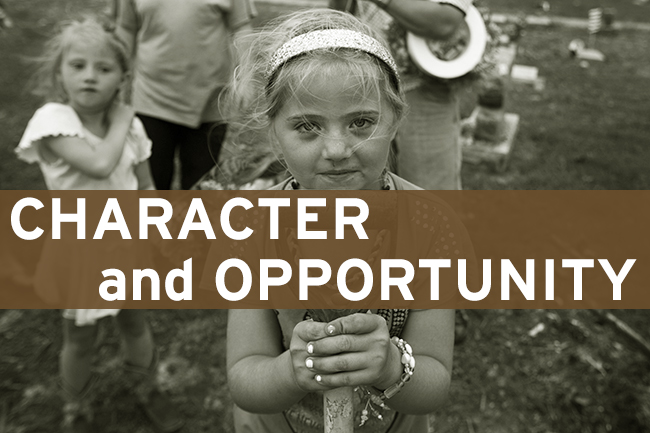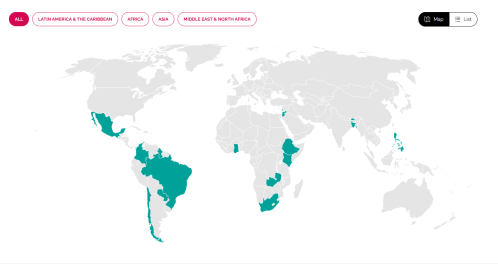In this essay from the Center on Children and Families’ Essay Series on Character and Opportunity, James Heckman says too much emphasis is placed on one side of the human capital coin – namely cognitive skills, variously equated with IQ and scores on achievement tests – to the detriment of character skills.
Mainstream economic models treat individuals as passive vessels into which human capital investments are poured in the hope of boosting cognitive abilities. The persistence of this approach, most clearly articulated by Becker and Tomes,1 is frustrating given recent progress in understanding the complex dynamics of skill development. Too much emphasis continues to be placed on one side of the human capital coin – namely cognitive skills, variously equated with IQ and scores on achievement tests – to the detriment of character skills.
In the Becker-Tomes model, the only limitations on investments in the human capital of children by parents come in the form of credit constraints and genetic inheritance. And childhood is typically treated as a single period, during which any investments are equally productive.
The focus in the traditional model is misleading. Character skills matter as much as cognitive skills. Returns on investments made at different stages in a child’s development result in different returns. Credit constraints are much less important than parenting. And, far from being passive receptacles, children develop in the very process of learning, with implications for subsequent skill development.
The latest literature, summarized in my paper with Stefano Mosso,2 establishes eight important facts:
1. Character skills matter at least as much as cognitive skills. A multiplicity of skills is needed for success in life. The power of personality, or character, has been demonstrated in numerous studies in addition to the longer-established power of cognitive traits like IQ and scores on achievement tests. If anything, character strengths matter more.3
2. Important skills are not innate “traits” solely acquired by genetic inheritance. This is not a question of semantics: skills, or capacities to function, can be both acquired and developed. Both cognitive and non-cognitive skills can be shaped and change over the life cycle. This suggests new and productive avenues for public policy.
3. For skill development, timing matters. There are both sensitive and critical periods for the formation of skills. Sensitive periods are those periods where investment is especially productive. Critical periods are now-or-never periods, when investment is essential since investment at other stages yields no return. Particular investment strategies (policies) differ in their effectiveness at different stages of childhood.
4. The early years are the most effective period for investments in both cognitive and non-cognitive skills. Humans are most malleable, flexible and able to learn and be imprinted by parents and culture during their first years of life. Interventions during these years are therefore likely to yield the best results, as evaluations of quality early years programs, including the Perry Preschool Program, demonstrate.
5. Successful adolescent interventions largely operate through promoting character skills, since cognitive skills tend to be solidified before adolescence.
6. Skills beget skills. The benefit of an investment in human capital depends in part on the existing level of skills – a phenomenon that economists call static complementarity. So, more motivated children benefit the most from additional investments. But in addition, investments today increase the stock of future skills, which in turn increases the return to future investments – a phenomenon known as dynamic complementarity. This is one reason early investments have high returns: they make future investments more productive. Narrowly focused policies risk failing to capture these synergisms in the expression and development of skills.
7. The development of skills takes place within a vital “scaffolding.” Successful investment strategies at all stages of the life cycle engage the child and investors (parent, teacher, mentor) in an interactive process. Scaffolding consists of an adaptive strategy that recognizes the current capacities of the child (trainee) and guides him or her to further learning without too much frustration. Activities are tailored to the individual child’s current ability – it must be neither too hard nor too easy – in order to keep them in the “zone of proximal development,” the level of difficulty at which the child can learn the most. Good schools, preschools and apprenticeship programs do what good parents do: engage the child actively within the right scaffolding for their skill development.
8. Credit constraints are not very important. There is a strong empirical relationship between educational attainment and parental income. However, parental income is a proxy for many attributes of the parental environment. The causal evidence of an importance role for credit constraints is weak. Parenting matters much more than parental income.
Our knowledge of the process of skills development has advanced rapidly in recent years. Policy-making, however, lags far behind. It is time to bring the development of policy up to date with the development of empirical knowledge. This is not an academic exercise: skills foster social inclusion and promote economic and social mobility, economic productivity, and well-being. Skills give agency to people to shape their lives, to create new skills. Skills lie at the very center of human flourishing.
For one thing, the powerful role of parents, families, and general social environments in shaping skills must be integrated into policy formation. The engagement of parents, in particular, is central to the creation of the right environment – the correctly constructed scaffolding – for developing both stronger cognitive abilities and character skills.
Current debates about inequality focus on end results, rather than early investments. Redistribution is therefore seen as the main vehicle for promoting economic opportunity and social mobility. A fuller understanding of the dynamics of skill development suggests that pre-distribution, in terms of ameliorative public policy to level the opportunities for learning, would be an economically efficient and socially fair alternative to redistribution.
1. Becker, Gary S., and Nigel Tomes. “An Equilibrium Theory of the Distribution of Income and Intergenerational Mobility.” Journal of Political Economy 87 (December 1979): 1153-1189.
Becker, Gary S., and Nigel Tomes. “Human Capital and the Rise and Fall of Families.” Journal of Labor Economics 4 (July 1986): S1-S39.
2. Heckman, James J., and Stefano Mosso. “The Economics of Human Development and Social Mobility.” Annual Review of Economics 6 (2014): 689-733.
3. Almlund, Mathilde, Duckworth, Angela Lee, Heckman, James J., and Tim Kautz. “Personality Psychology and Economics.” In Handbook of the Economics of Education, ed. Eric A. Hanushek et al. (Amsterdam: Elsevier, 2011).



